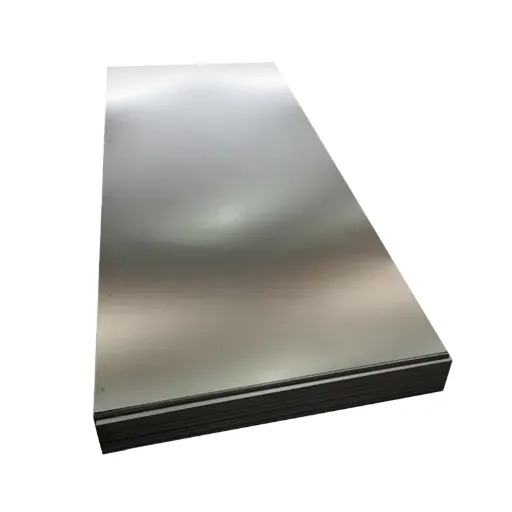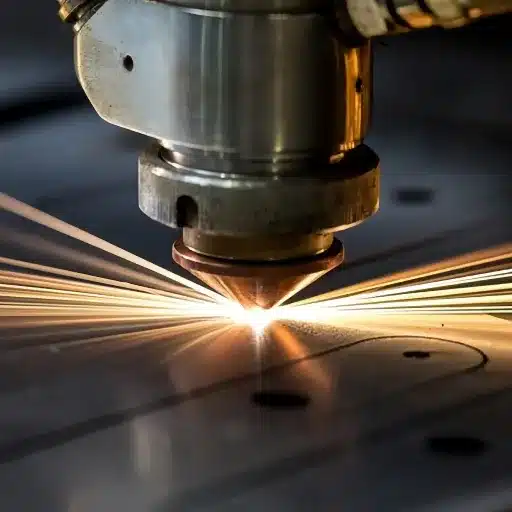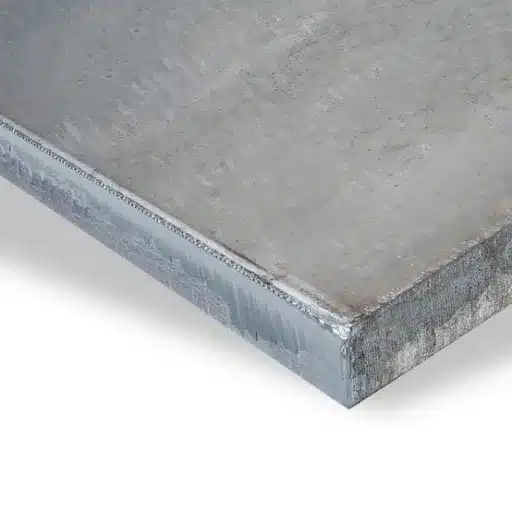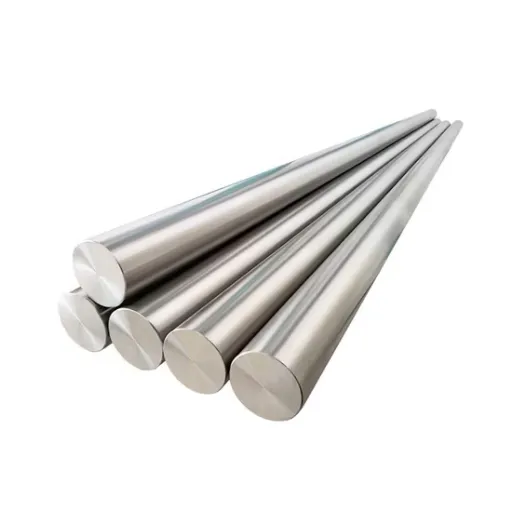Any time you buy cold-rolled steel, consider the grade of the material, which is essential because it directly affects the outcome of the work. There are several most preferred grades, such as DC01 and DC04, because of their properties and uses. However, the differences between the two can be hard to distinguish with more angles, particularly in industries that use technology and performance. This text aims to highlight the features of each type of steel, its consumption field, and the overall dependence grade of DC01 vs DC04 performance. It is also intended to guide various spheres, including the motor industry, building and construction, and any other, where material could be chosen consciously, keeping in mind what’s better suited for the purpose, to optimize the material.
What are the mechanical properties of DC01 and DC04 cold-rolled steel?
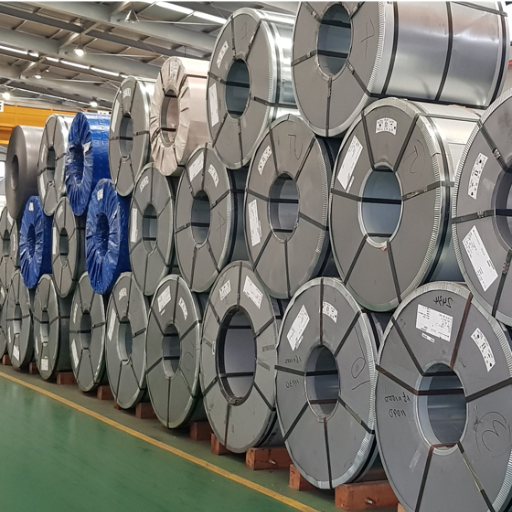
DC01 and DC04 cold-rolled steels differ in their mechanical properties; both are low-carbon steels.
- DC01: This grade is stronger, but formability is somewhat restricted. Its yield strength is about 280 MPa, and its tensile strength is between 270 and 410 MPa at least. Elongation would be 28%️ in most gauge thicknesses, which means it can still be used for forming.
- DC04: This grade is enhanced in formability and has an even lower yield level of 240 MPa to about the same range of tensile strength of 270 – 370 MPa. The elongation of grade DC04 is higher compared to this grade, approximately 38%; hence, more severe forming operations can be performed on it.
The material’s properties and the effect of stress distribution on the material’s elasticity range allow the use of this kind of mounting in moderate-strength applications. However, it only allows shaping of weaker materials when such shaping is imposed by sharp curvatures. The application is unsuitable for high-strength plastics, for they are reliant on soft liners that deform, shortening the useful life of the component.
How does yield strength differ in DC01 vs DC04?
When stress is at the proportionate yield limit, a material is said to have reached the threshold of its plastic deformation, i.e., it doesn’t revert to its initial form when the stress is removed. The difference in yield strength between DC01 and DC04 is essential in understanding their usability and behaviour in the forming processes.
Grad 220 DC01 is at least 280 MPa. This means that DC01 will not be applicable in applications that require very high strength and rigidity. This yield strength is lower than the tensile strength, which guarantees the structure’s high deformation after mechanical loading.
However, with the DC04, the minimum yield is lower, and more or less in the region of 240 MPa. The low value is accompanied by approximately 38% elongation rate, which is much higher than the region deformed is subjected to all kinds of pressures, drills, more or less, denoting well-cautious ensured tours. It is not a flat design, unlike bee bonds, another type with this say turn yield on the could bond better for simple connection of structures at other geometries, deeper levels, and with some counterparts complicated iterations.
Such differences in the yield strength of DC01 and DC04, where none is better than the other, prove that 181 offers them better use and purpose in regard to different fabricated parts. This is why DC01 is extensively used for building up structural elements or where stiffness will be prohibitive, and DC04 is used where easily shaped materials require different forming methods.
Comparing tensile strength between DC01 and DC04
| Parameter | DC01 | DC04 |
|---|---|---|
| Tensile Strength (MPa) | 270–410 | 270–690 |
| Yield Strength (MPa) | Not specified | 140–325 |
| Elongation (%) | ≥28 | ≥24 |
| Formability | Simple forming | High forming requirements |
| Carbon Content (%) | ≤0.12 | ≤0.08 |
| Applications | Bending, embossing, drawing | Deep drawing, automotive |
| Surface Quality | Smooth or matt | Smooth, ideal for aesthetics |
| Corrosion Resistance | Requires coating | Requires coating |
Understanding ductility and formability in DC01 vs DC04
When selecting materials for the production process, taking advantage of available ductility and formability is essential. This is because this will determine how far the material can be stretched, whether it is curved or it is to be manipulated in any way without falling apart. Let us now explore this comparison between grad dc01 vs dc04, with the relevant information as follows:
- Strain–Stretch Latemere – Elongation at Break
- DC01: This provides typically a strain before breaking of about 28-30%, which is reasonable ductility for structural purposes.
- DC04: Provides an elongation of about 38-40%, so it is more ductile and more formable. This means it is especially used for forming operations like deep drawing.
- Springback Behavior
- DC01: This sparkles further spring back due to the longer placement of the yield, and for this reason, it is inappropriate for use in advanced form shapes.
- DC04: This one provides less springback, meaning more complex geometries are possible.
- Strain Distribution
- DC01: During deformation, one side of this material shows too much strain, whereas the other side indicates too little; thus, it cannot be used for such accurate designs.
- DC04 preserves a uniform strain distribution over the highly complex parts, making harmonious and uniform deformations possible.
- Bendability
- DC01: The less ductile material than DC04 requires higher forces relative to the radius-dimensioned bending tools.
DC04: It can be bent with a smaller radius, making it more appropriate for certain complex bends.
- Work Hardening Rate
- DC01: Now that DC01 has a much greater work hardening rate than deep drawing operations, it will stop strain just short of a complete free flow of material, but with the benefit of higher stiffness.
- DC04: When greater plastic strains are expected, as in the deep drawing case, a lower work hardening rate or an easier rise in strain is conducive to greater suitability of the material.
Such comparisons depict the good and bad sides of DC01 and DC04, specifically comparing which material is more suited to the particular manufacturing process. DC01 can be considered where the strength or rigidity of the part being manufactured is more important than the ductility or formability of the part, whereas DC04 will be perfect when more formable and ductile materials are needed.
How does chemical composition vary between DC01 and DC04?
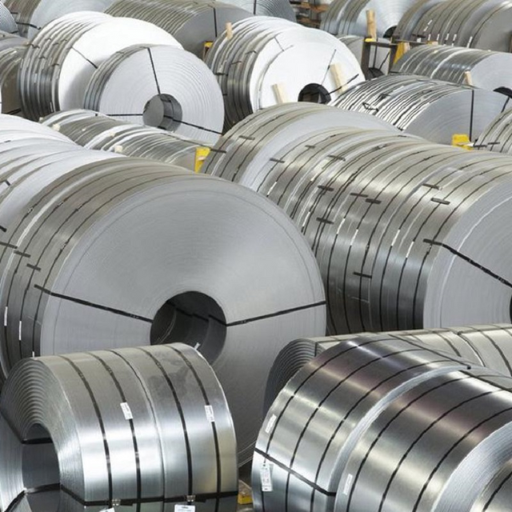
When talking about the DC01 and DC04 grades, there is mostly a difference in the concentration of carbon and other alloying elements. Because the carbon content of DC04 is less than that of DC01, it is better to ensure good mechanical properties like ductility and formability. DC04 may also be more controlled in respect to certain elements such as manganese and silicon, for even higher deformation. The differences in composition help produce the different mechanical properties required by the physical properties of the materials in question.
Analyzing the carbon content variations in DC01 and DC04
| Parameter | DC01 | DC04 |
|---|---|---|
| Maximum Carbon Content | ≤0.12% | ≤0.08% |
| Carbon Impact on Strength | Higher carbon, more strength | Lower carbon, more ductility |
| Formability | Moderate | High |
| Application Suitability | General forming | Deep drawing |
| Surface Finish Impact | Minimal | Enhanced smoothness |
Impact of alloy elements on DC01 and DC04 properties
Regarding the grad DC01 vs DC04 grade, the additional elements present in the material alter its mechanical characteristics and behavior. According to my analysis, the added elements also enhance the material properties. In DC01, the strengthening elements in the composition are controlled so that the properties remain relatively high strength coupled with a moderate ductility, which applies to conventional uses. However, the latter comprises a controlled amount of the relevant elements, thus enhancing its forming and extending capability and performing better in highly demanding deformation or forming processes. It becomes necessary to make such interventions so that both materials fit into the expected sectors where they are meant to be applied.
What role does steel surface quality play in DC01 and DC04?
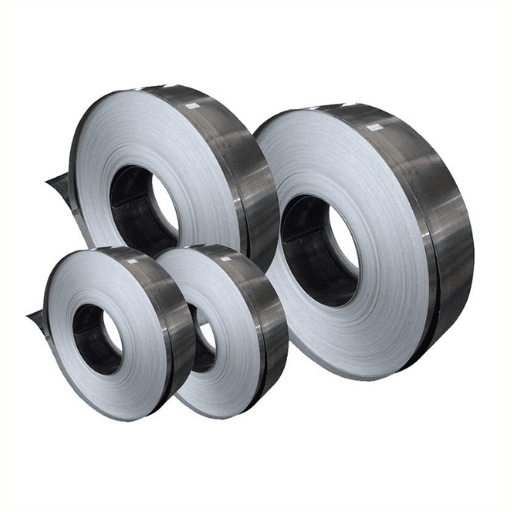
The surface quality of steel is a very important factor in determining the efficiency of applying the two steel grades in each case. For DC01, requirements for the steel’s surface to be smooth and consistent are to ensure adhesion of the coatings, including painting and galvanizing, where these are a must, in general use. For DC04, on the other hand, there is a considerable emphasis on the surface quality to allow for complex manipulation without the fear of cracks or irregularities in the piece’s finish. Therefore, each material caters to the specific requirements of industries where it will serve best.
How does surface quality affect performance in DC01 and DC04?
| Parameter | DC01 | DC04 |
|---|---|---|
| Surface Finish Types | Smooth, matt | Smooth, high-quality finish |
| Impact on Aesthetics | Basic | Enhanced |
| Coating Compatibility | Good | Excellent |
| Forming Performance | Suitable for simple forming | Ideal for deep drawing |
| Corrosion Resistance | Requires coating | Requires coating |
| Application Suitability | General use | Precision, aesthetic needs |
Exploring the importance of corrosion resistance in DC01 and DC04
Corrosion resistance is among the essential factors for characterizing DC01 and DC04 steels, as durability, productivity, and overall life span of such compounds in different industries will depend on their response to corrosion. However, neither steel grade DC01 nor DC04 is particularly corrosion resistant without any surface treatment, though their capability in this aspect can be significantly improved with metallic or other coatings or galvanizing.
Steel grade DC01 vs DC04 resists corrosion in case of covering sheets of the body of a car and white goods, which are well known to be often subjected to water, chemicals, or atmospheric agents. For instance, this steel coil can easily resist corrosion and chemical attack after zinc coating or electroplating treatment has been performed, thereby increasing its life span and reducing maintenance cost. Statistics from the industry show that surfaces made of DC01 coated steel with zinc treatment can withstand corrosion up to ten times more than that of non-treated steel, which perfectly suits the purpose of use indoors as well as half outdoor,s where necessary.
Their existence extends to cases where both processing corrosive rooms are necessary and excellent formability is also considered. Because of its excellent surface finish, it can be easily applied for protective coatings, leaving the inner surface unaffected during forming operations. In such industries as car production, the anti-corrosion properties of DC04 may be intensified to satisfy severe degradation requirements. Some authors show that a surface-modified DC04 part withstands the aggressive environment for a longer time, for example, after applying an anti-corrosion coating such as hot dip galvanizing.
In conclusion, the demand for the use of corrosion-resistant DC01 and DC04 materials will ultimately be dictated by the operating conditions and the nature of the external environment to which the final product is exposed. As a result, these materials can be used at their maximum capacity for corrosion prevention, which increases their utilization even in more industrially crucial fields.
How do DC01 and DC04 fit into the steel grades of European Standard DIN EN 10130?

There is a recurrent debate among manufacturers and suppliers of steel plates and mechanical engineers on the merits of using one grade, DC01 vs DC04. Both grades are primarily used in several processes and applications, although each class’s chemical composition and mechanical properties dictate fabrication response. DC01 is the most common grade that can be subjected to a range of cold-forming operations such as bending, drawing, etc. Such products will be used for outer panel skin, being thin and pliable, and will require cutting, pressing and other operations involving shaping until ready.
In contrast, DC04 steel grade is superior in formability than DC01, and it is also more expensive. Thus, the choice of formability presentation of each steel material is supported by their compositions and mechanical behavior. Both materials, in which inclusions are irrelevant to formability, have predefined thickness variations as in the Japanese standards JIS G3141 CG4E or National standards GOST, thus making cold forming procedures more accurate.
Classification according to the maximum permissible yield strength
One of the most important factors in determining the different categories of steel and their role in different fields is the maximum permissible yield point. The following are the classes and their relative maximum yield strength as a rule:
- dc01
- 200mpa maximum yield stress.
- General uses, several arrangements do not demand too much.
- 070RY.
- 240MPA is the maximum yield stress.
- Applied for any operations that need a great deal of formability.
- dc04.
- Has a maximum yield stress of 225 MPa.
- Has high formability potential for even the most complex shaping processes.
- D06
- A UTS as high as 180-N/mm2.
- Can be used for operations and applications that involve distortions of deep parts, which have good bendability.
- DC07
- Required maximum strength: 170 MPa.
- The elasticity property is most suitable for high-pressure techniques, whereby even slight residual curves are reduced or even removed.
Overview of steel grades under the European standard
Steel grades under the EU standard are classified according to specific features, such as mechanical characteristics, chemical makeup, and purpose. Each of these grades satisfies different types of industrial applications in the automotive, construction, and manufacturing industries. An outline of useful grades of steel most commonly used in industry, together with newly discovered aspects of their structure, is below:
- DC01
- Maximum Yield Strength: 280 MPa
- Application: It is a standard grade for thin cold-working when little or no flow is required for deep drawing purposes. Its application often includes making furniture, hanger racks, and electrical appliances.
- Advantages:
- Easy to weld and machine.
- It can be in several shape and surface designs or finishes for several functionalities.
- DC03
- Maximum Yield Strength: 240 MPa
- Application: It absorbs moderate deep drawing operations to produce outer body panels or other components used in vehicles and electronic diskettes, respectively.
- Advantages:
- Better formability than DC01, enhanced ductility.
- A balance between resistance and plasticity.
- DC04
- Maximum Yield Strength: 210 MPa
- Application: It allows parts with very high drawing capacity, which is required in body cases.
- Advantages:
- Reliability in forming high-precision forming tools.
- Requirements to the formed component do not allow forming jet smooth surfaces.
- DC05
- Maximum Yield Strength: 180 MPa
- Application: It is primarily designed for making parts that require deeper drawing, which tends to be very ductile, such as appliance or vehicle parts.
- Advantages:
- Stretchability of parts which can be best described as high.
- Self-stability in the target zone for large operation time without work hardening.
- DC06
- Maximum Yield Strength: 170 MPa
- Application: It is used against strenuous uses such as precision stamping, where a minimal load return device is used.
- Advantages:
- Suitable for forming parts that need a tight fit.
- Impossible shapes can be attained through such drawability.
Dual-Phase (DP) Steels and High Strength Low Alloy (HSLA) Steels – Contemporary engineering solutions widen the range of grades by the European standard.
DP Steel Range Yield Strength: 500 MPa—1200 MPa has high strength combined with minimum weight; hence, it is suitable for automotive parts, especially security-related parts.
HSLA Steels:
- Yield strengths ranges (over 350 MPa in general).
- Outstanding corrosion and weld properties.
While looking at grad dc01 vs dc04, the maximum yield stress strength characteristics, which indicate the ease of forming, are 280MPa. Power-Welds remain flexible and are less than 240MPa, perfectly elastic.
Key Benefits of Using EU Steel Grades
- Enhanced Sustainability: The manufacturing processes used in EU-produced steels are environmentally friendly, in accordance with international environmental standards.
- Cost Efficiency: These grades reduce wastage at the production stage because they are made to be highly precise.
- Global Compatibility: European standards are in tune with what the rest of the world imposes, and as such, there is no difficulty in integrating within global supply chains.
In light of such a comprehensive understanding, it becomes evident that modern manufacturing practices can make good use of European steel grades. With the advancements in steel technology not stopping for a moment, on the contrary, highly durable, even rigid, and perfectly well-fitting products can be manufactured for changing market requirements with such developments.
What are the typical applications of DC01 and DC04 cold-rolled steel?

DC01 and DC04 cold-rolled steel are widely used in various industries due to their excellent surface quality and versatility.
- DC01: This grade is commonly used for general engineering and product applications such as metal furniture, domestic appliances, and automotive components, where good bending and moderate forming properties are sufficient.
- DC04: Known for its superior deep-drawing capabilities, DC04 is often chosen for more demanding applications like intricate automotive body panels, electrical enclosures, and appliances requiring more complex shapes.
Both materials excel in applications that require a smooth finish and uniform thickness, making them integral to precise manufacturing processes.
Best uses for DC01 in steel products
| Parameter | Best Uses for DC01 |
|---|---|
| Forming Applications | Bending, embossing, beading |
| Automotive Industry | Basic body panels |
| Appliance Industry | Simple enclosures, casings |
| Construction Industry | Non-structural components |
| Surface Coating | Suitable for painting |
| Cost Efficiency | Affordable for general use |
Common applications for DC04 steel coil
| Parameter | Common Applications for DC04 Steel Coil |
|---|---|
| Automotive Industry | Deep-drawn body parts, spare wheel wells |
| Appliance Industry | High-quality casings, enclosures |
| Construction Industry | Decorative panels, cladding |
| Precision Components | Complex shapes, deep-drawn parts |
| Surface Coating | Ideal for painting, galvanizing |
| Aesthetic Applications | Smooth finish for visible components |
References
- Monroe Community College – Degree Audit Sheet for Diversity and Community Studies (DC01)
This source outlines the requirements and structure for the DC01 degree program.
View Source - Monroe Community College – Degree Audit Sheet for Cultural Studies (DC04)
This document details the DC04 program’s credit requirements and course structure.
View Source - Radford University – Electronic Fact Book
This resource provides comprehensive data on degrees conferred, including DC01 and DC04, along with other academic statistics.
View Source
Frequently Asked Questions (FAQ)
Q: What are the main differences between DC01 and DC04 cold-rolled steel coils?
A: DC01 and DC04 are cold-rolled steel grades but differ in their applications and properties. DC01 is a general-purpose steel with no specific properties for deep drawing, while DC04 is specifically designed for deep drawing applications, offering better formability due to its low carbon content and improved ductility.
Q: How does the carbon content affect the properties of DC01 and DC04 steel plate?
A: Carbon content plays a crucial role in determining steel’s properties. DC01 has a higher carbon content than DC04, making it less suitable for deep drawing applications. In contrast, DC04 has a lower carbon content, making it more ductile and suitable for deep drawing processes.
Q: What is the role of the EN 10130 standard in defining DC01 and DC04 cold-rolled steel?
A: The EN 10130 standard specifies the technical delivery conditions for cold-rolled low-carbon steel flat products. It defines the mechanical properties, chemical composition, and surface finish requirements for different steel grades, including DC01 and DC04, ensuring consistency and quality in steel production.
Q: Are DC01 and DC04 suitable for galvanizing processes?
A: Yes, both DC01 and DC04 can be galvanized to enhance corrosion resistance. Galvanizing involves applying a zinc coating to the steel surface, which protects the steel from rust and extends its service life, making it suitable for various industrial applications.
Q: Can DC01 and DC04 be used for cold forming applications?
A: Both DC01 and DC04 are suitable for cold forming applications, but DC04 is more ideal for processes requiring significant deformation due to its superior deep drawing properties. DC01 can be used for less demanding forming applications where deep drawing is not required.
Q: What are the typical applications of DC01 cold-rolled steel plate?
A: DC01 is typically used for general engineering applications, where specific deep drawing properties are not required. It is commonly used to manufacture steel sheets, strips, and simple flat steel products.
Q: What industrial applications benefit from the use of DC04 cold-rolled steel?
A: DC04 cold-rolled steel is ideal for applications requiring excellent deep drawing characteristics, such as automotive body panels, complex stamped parts, and other components where high formability and a smooth surface finish are essential.
Q: How is DC04 cold-rolled steel classified regarding deep drawing properties?
A: DC04 is classified as a deep drawing steel grade due to its low carbon content and excellent ductility. These properties make it highly suitable for forming processes that involve significant deformation without compromising the steel’s integrity.
Q: How does zinc coating impact DC01 and DC04 steel sheets?
A: Zinc coating provides additional corrosion protection to DC01 and DC04 steel sheets. The zinc layer acts as a barrier, preventing rust and increasing the durability and service life of the steel, especially in environments exposed to moisture.


